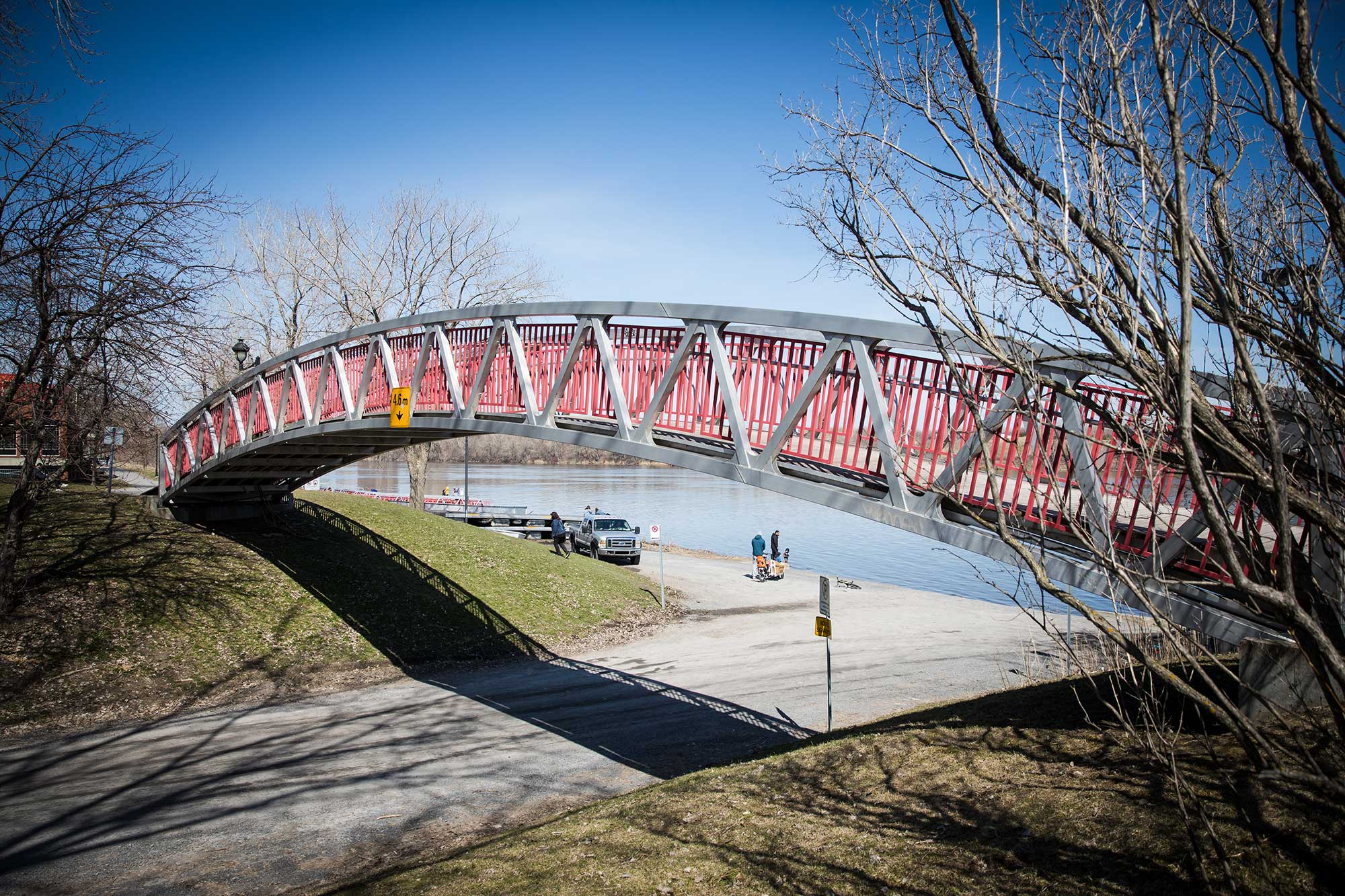Aluminum became a common construction material choice relatively recently, and today it is successfully used for many applications. Because it is lightweight, aluminum is used in planes and cars to improve fuel efficiency. It’s also an aesthetically pleasing and durable material for buildings and structures. Aluminum is also the most easily recyclable material (and the most frequently recycled material), and it has the highest value when recycled.
For decades, pedestrian and vehicular bridges had been designed and built the same way. Steel and concrete had been the dominant materials, with aluminum given little consideration. However, when the costs of using these traditional materials were compared to aluminum, often only the initial costs of construction and installation were taken into account, either due to a lack of knowledge or misinformation. Today’s architects and contractors recognize that aluminum’s Total Cost of Ownership (TCO) is actually low, since very little repair and maintenance are necessary. A study conducted by MAADI Group takes an in-depth look at the TCO and is available here.
In the past century, initial attempts to use aluminum were not successful, as engineers did not yet fully understand the material and all the different facets of working with it. But today, aluminum is recognized as a durable and virtually maintenance-free material choice for structures.
Why Choose Aluminum?
Aluminum has many advantageous characteristics that make it attractive for a variety of applications, including pedestrian and vehicular bridges.
1. Aluminum’s high strength-to-weight ratio provides the advantage of light weight. This creates greater efficiency in terms of transportation, assembly and installation. For example, by reducing the dead load of a bridge deck, the live load can be increased.
2. Aluminum is resilient. It can flex under loads and easily spring back from the shock of an impact.
3. Aluminum is also great for cold weather: it does not lose its ductility when the temperature drops, unlike most other materials. Instead, aluminum actually becomes stronger as temperatures fall.
4. Thanks to its high workability, aluminum can be transformed into the perfect shape for every application, always offering excellent rigidity and energy absorption. For example, through the extrusion process, aluminum profiles can assume complex shapes, maximizing geometric properties or incorporating grooves, hollow areas or any other linear feature designed for a specific use. This increases efficiency and can also reduce installation costs.
5. Aluminum is easily assembled with other materials. And with today’s advances in knowledge, engineers can avoid the common problem of galvanic corrosion seen in the past.
6. For any outdoor structure, aluminum’s durability is its most crucial advantage. Aluminum quickly generates an invisible protective oxide coating, making it highly resistant to atmospheric corrosion. For environments that are more corrosive to metals, aluminum has a clear advantage over steel.
7. In contrast to steel, aluminum does not require paint or any other protective finishing, except when an enhanced appearance is desired. Aluminum structures do not need to be painted during their entire lifetime, which can be up to 100 years. However, aluminum can be treated with a broad range of techniques like liquid coating (paints), powder coatings, anodizing and electroplating, giving aluminum structures superior aesthetic value. Unlike steel, aluminum can be sanded or pressure washed to remove graffiti without damaging the finish.
8. Finally, aluminum can be recycled and reused indefinitely, and it has high scrap value. These two important factors are often overlooked during investment decisions.

